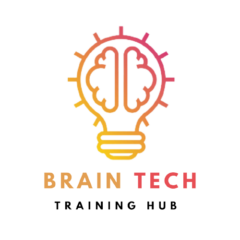The phrase “Educate, Agitate, Organize” is a powerful call to action with a rich tradition on the left. It urges us to learn, raise awareness, and build movements to drive social change. This slogan has been popularized by various leaders, including Babasaheb Ambedkar, who used it in his 1942 speech to the All-India Depressed Classes Conference, emphasizing the need for a mass movement to combat caste oppression.
Educate, Agitate, Organize: An In-Depth Overview
What Does “Educate, Agitate, Organize” Mean?
Educate: The first part of the slogan, “Educate,” emphasizes the importance of education as a means of changing the world, not just understanding it. It is about cultivating the mind, which should be the ultimate aim of human existence.
Agitate: The second part, “Agitate,” refers to the need for enthusiasm and the importance of raising awareness about social realities. It involves creating a sense of urgency and mobilizing people to recognize and act on injustices.
Organize: The final part, “Organize,” stresses the need for collective action and the power of organized efforts. It highlights the importance of uniting people to work together towards common goals and effecting lasting change.
The Historical Origins of “Educate, Agitate, Organize”
- Social Democratic Federation (SDF): The slogan was first used by the SDF, a UK socialist organization, in an 1883 pamphlet entitled “Socialism Made Plain, the Social and Political Manifesto of the Democratic Federation.”
- Babasaheb Ambedkar: A notable user of this slogan was Babasaheb Ambedkar, the social reformer and India’s first Justice Minister, who emphasized it in his 1942 speech to drive home the point that a mass movement was needed to upend caste oppression.
- Wilhelm Liebknecht: The German socialist Wilhelm Liebknecht popularized a similar slogan, “Studieren, Propagandieren, Organisieren” (Learn, Propagandize, Organize), at the German Social Democratic Party Congress in St. Gall in 1887.
Why “Educate, Agitate, Organize” is Essential for Social Reform
- Education as Empowerment: Education empowers individuals with knowledge and critical thinking skills, enabling them to understand and challenge the status quo.
- Agitation for Awareness: Agitation is crucial for raising public consciousness about social injustices and mobilizing support for change.
- Organization for Collective Action: Organized efforts are more powerful and effective in achieving social reforms than individual actions.
How to Implement “Educate, Agitate, Organize” in Today’s World
Educate:
- Schools and Universities: Promote critical thinking and social awareness in educational institutions.
- Community Workshops: Organize workshops to educate people on social issues and their rights.
- Online Platforms: Utilize digital media to spread knowledge and engage a wider audience.
Agitate:
- Social Media Campaigns: Use social media to highlight social issues and mobilize public opinion.
- Protests and Rallies: Organize peaceful protests and rallies to draw attention to injustices.
- Public Speaking: Engage in public speaking to inspire and motivate others to take action.
Organize:
- Grassroots Movements: Build grassroots organizations to address local issues and create change from the ground up.
- Coalitions and Alliances: Form alliances with other groups to strengthen the movement and increase its impact.
- Community Centers: Establish community centers as hubs for organizing activities and providing resources.
Examples of “Educate, Agitate, Organize” in Action
- Civil Rights Movement: Leaders like Martin Luther King Jr. educated the public on racial injustices, agitated through speeches and protests, and organized marches and boycotts to achieve civil rights reforms.
- Environmental Movements: Activists educate about climate change, agitate through campaigns like Fridays for Future, and organize global strikes to demand action from governments and corporations.
- Labor Movements: Labor leaders educate workers about their rights, agitate for better working conditions, and organize strikes and union activities to negotiate improvements.
The Importance of “Educate, Agitate, Organize” in Modern Society
- Combating Inequality: This approach is vital in addressing economic, racial, and gender inequalities.
- Promoting Democracy: Education, agitation, and organization are essential for a healthy democracy, ensuring that all voices are heard and represented.
- Fostering Social Justice: These principles help create a more just and equitable society by challenging oppressive systems and advocating for the marginalized.
Conclusion: Embracing “Educate, Agitate, Organize”
“Educate, Agitate, Organize” is a timeless and powerful slogan that encapsulates the essence of social reform and change. It emphasizes the importance of education, agitation, and organization in bringing about meaningful and lasting change in society. This slogan continues to inspire and guide social reformers and activists around the world. It is a must-know for anyone interested in social reform and change. It is a testament to the power of collective action and the importance of education in shaping our world. It is a reminder that change is possible when we educate ourselves, agitate for what is right, and organize to bring about the change we want to see.
If you want to know more about “Educate, Agitate, Organize” and want to understand which side you should pick, contact us. We are BrainTech Hub, and we will guide you towards it.



